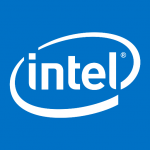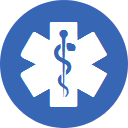Mobile Computing Improving EH&S Management
MOUNTAIN VIEW, Calif., 1 January 2001 — Mobile computing has been around for a long time, but EH&S professionals are just beginning to realize its potential. Judging by the recent increase in the number and variety of applications, the EH&S software industry has embraced mobile tools as an integral component of the future of EH&S automation. But the market still seems to be a few years behind the technology.
Most of us think of mobile computing in terms of laptops or notebooks, or those Personal Digital Assistants (PDAs) that are nothing more than a battery-operated Rolodex and appointment calendar. Despite the computer industry’s continuing efforts to make lighter, more portable, and more powerful tools, most people continue to view these devices as an extension of the desktop with limited potential for hardcore field work. We listen to the rhetoric about new capabilities for data entry and retrieval using a variety of handheld devices, but remain skeptical that these promises can actually be realized.
Meanwhile, many analysts are predicting an increase in the use of mobile computing, especially in the business sector. According to IDC, the market for smart handheld devices will grow from 12.9 million units in 2000 to over 63.4 million by 2004. These include devices like PDAs, smartphones, keypad handhelds, and pen-based notepads. Some offer wireless access to the Internet or to a local area network (LAN), while others can be used in the field to collect data, then transported back to the office to upload the data to a PC.
According to an article in PDA News, companies that incorporate handheld computing devices into their daily business operations have experienced “greater efficiency and faster fulfillment of client requests due to: reduced double handling of information; greater interaction with ordering systems; and a reduction in the number of mistakes made due to keying errors.”.
Despite these advantages and recent advances in technology, EH&S applications for mobile computing have evolved more slowly than the industry as a whole and have yet to achieve broad acceptance in the market. But that’s all about to change. If you’ve been following the EH&S Software News over the past few issues, you may have noticed that the number and variety of information systems that include applications for handheld computers or PDAs is on the rise. With the right combination of software and hardware, you can now track hazardous materials, record sampling data, audit EHS compliance, or retrieve material safety data sheets (MSDSs) whenever and wherever they are needed, anywhere within your facility or out in the field. Following are some examples.
Hazardous Material/Waste Tracking
Handheld computers/PDAs are helping Penn State Environmental Health and Safety (EH&S) personnel enhance field operations and automate government-mandated record keeping [www.psu.edu]. Harold L. Brungard III, a member of Penn State’s hazardous waste (HazWaste) management staff, has been participating in the field tests of the new paperless system. He estimates that the PDAs are saving 5 to 10 hours a week of data entry time as well as improving data management accuracy. Brungard explains that the HazWaste staff respond to between 75 and 150 requests to collect and manage hazardous waste each month. The materials include flammable solvents, corrosives, toxic materials, and other hazardous wastes. On average, the team picks up about 500 containers and more than 15,000 pounds of waste each month.
With the new system, University personnel who want to dispose of waste material, visit the University’s EH&S website where they complete an online form to send information about the waste electronically to the EH&S department. The information from a completed form is then loaded into a database. The HazWaste staff uses the database to generate an itinerary for their daily collection rounds. They can also download information from the database into their 3-Com Palm III computers and edit this information while en-route.
The Rockwell Science Center developed a prototype, called EnvInv, for inventorying hazardous materials using a PDA. According to Corinne Clinton Ruokangas, a member of the technical staff, “PDAs serve as low-cost information collectors – providing a level of accuracy and feedback not available with paper forms – and support the automatic transfer of data to workstations and central databases. She suggests that “PDAs can also be used as handheld manuals” to display diagrams, suggest scheduling and routing locations, and provide maintenance or diagnostic information to a user in environments where laptops may not be feasible.
They can provide “remote access to reference materials which may be hyperlinked.”
Data Collection in the Field
PDAs are particularly helpful for recording data in the field. Several software developers are now offering products to meet these needs. For example, EarthSoft recently announced the development of Pocket EQuIS, for collecting and managing data at the point of generation [www.earthsoft.com]. Similarly, FieldWorker Products Limited offers FieldWorker Pro, which allows relational data collection projects to be developed on the desktop or on a mobile device. Field workers can refer to images stored on the device’s desktop, or link data to a specific image, then connect to a GPS receiver to create point, line, and polygon geographic information. The company claims the product can be used with a variety of mobile devices, from laptops to palm tops to smart phones [www.fieldworker.com].
Potential data collection applications extend to just about any EH&S-related activity, such as natural resources inventories, water testing, and air emissions monitoring. For example, Two Dog Forest Inventory Software, by Foresters Incorporated, is a software suite with data collection, processing, and inventory capabilities. The product is used on handheld and desktop computers to inventory forests and to collect data on flora, fauna, and other site attributes in support of multi-resource inventories and certification.
DataPort, a hand-held data entry unit by AllMax Professional Solutions Inc. targets the field data collection needs of municipal and industrial wastewater and water treatment facilities. These devices include built-in scanners and fit in your pocket. Users can download data (e.g., material inventories or meters/gauges that must be monitored) from a PC to the DataPort device, then use the device to print barcode labels, scan barcodes,
enter field data, and upload the information back to the PC.
LEADERS™ LDRS by Environmental Monitoring Service is fugitive emissions software based
on a relational database. Features include LEADERS FieldSmart™ handheld software and DeskSmart™ desktop software.



